Exploring the Cultural Significance of Pu Erh Tea
Shop our Pu Erh Tea collections!
Pu Erh tea's roots trace back to ancient China, with its production centered in Yunnan province. This unique tea has a rich history spanning centuries and a deep connection to its geographical origins.
Historical Background
Pu Erh tea originated during the Eastern Han Dynasty (25-220 CE) in China. It was first cultivated by the indigenous Pu people of Yunnan. The tea gained popularity as a tribute tea during the Tang Dynasty (618-907 CE).
Bestsellers
In the Song Dynasty (960-1279 CE), Pu Erh became a valuable trade commodity. Merchants transported it along the ancient Tea Horse Road, exchanging it for horses with Tibet.
The Ming Dynasty (1368-1644 CE) saw Pu Erh's reputation grow further. It was prized for its medicinal properties and unique aging process.
Geographical Roots
Pu Erh tea is exclusively produced in Yunnan province, southwestern China. The region's distinct terroir contributes to the tea's unique characteristics.
Yunnan's subtropical climate, high altitude, and mineral-rich soil create ideal conditions for tea cultivation. The area's biodiversity, including ancient tea trees, plays a crucial role in Pu Erh production.
Key Pu Erh-producing areas include:
- Xishuangbanna
- Pu'er City (formerly Simao)
- Lincang
- Baoshan
These regions are home to some of the oldest tea trees in the world, some over 1,000 years old.
Production Process
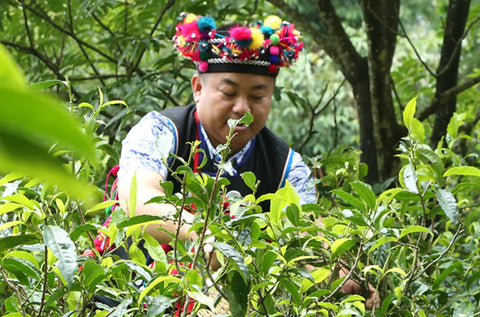
Pu Erh tea undergoes a unique and intricate production process that contributes to its distinctive flavor and health benefits. This process involves careful harvesting, fermentation, and aging techniques.
Harvesting
You'll find that Pu Erh tea leaves are typically harvested from large-leaf tea varieties in Yunnan province, China. The ideal time for picking is during spring and autumn when the leaves are at their peak quality.
Skilled tea pickers carefully select mature leaves, often including buds and young leaves for added flavor complexity. The harvesting process requires precision to ensure only the best leaves are chosen.
After picking, the leaves are quickly processed to prevent oxidation. This involves withering, rolling, and sun-drying steps that prepare the leaves for the next stages of production.
Fermentation
Fermentation is a crucial step that sets Pu Erh apart from other teas. You'll encounter two main types of Pu Erh based on fermentation methods:
Lao Ban Zhang
- Raw (Sheng) Pu Erh: Undergoes natural fermentation over time
- Ripe (Shou) Pu Erh: Accelerated fermentation through a process called "wet piling"
For raw Pu Erh, the leaves are compressed into cakes or bricks and left to ferment naturally. This process can take years or even decades.
Ripe Pu Erh production involves piling tea leaves in a controlled environment. Moisture and heat are applied to speed up fermentation, typically lasting 45-60 days.
Aging
Aging is a critical factor in developing Pu Erh's complex flavors and aromas. You'll find that properly aged Pu Erh becomes smoother and more valuable over time.
Raw Pu Erh can be aged for decades, with some prized teas being over 50 years old. As it ages, the tea's flavor profile evolves, becoming mellower and more nuanced.
Ripe Pu Erh, having undergone accelerated fermentation, has a shorter aging period. It's often considered ready to drink after 1-2 years, but can still benefit from additional aging.
Proper storage is essential for aging Pu Erh. You should keep it in a cool, dry place away from strong odors. Some enthusiasts use special clay jars or bamboo wrapping to enhance the aging process.
Types of Pu Erh Tea
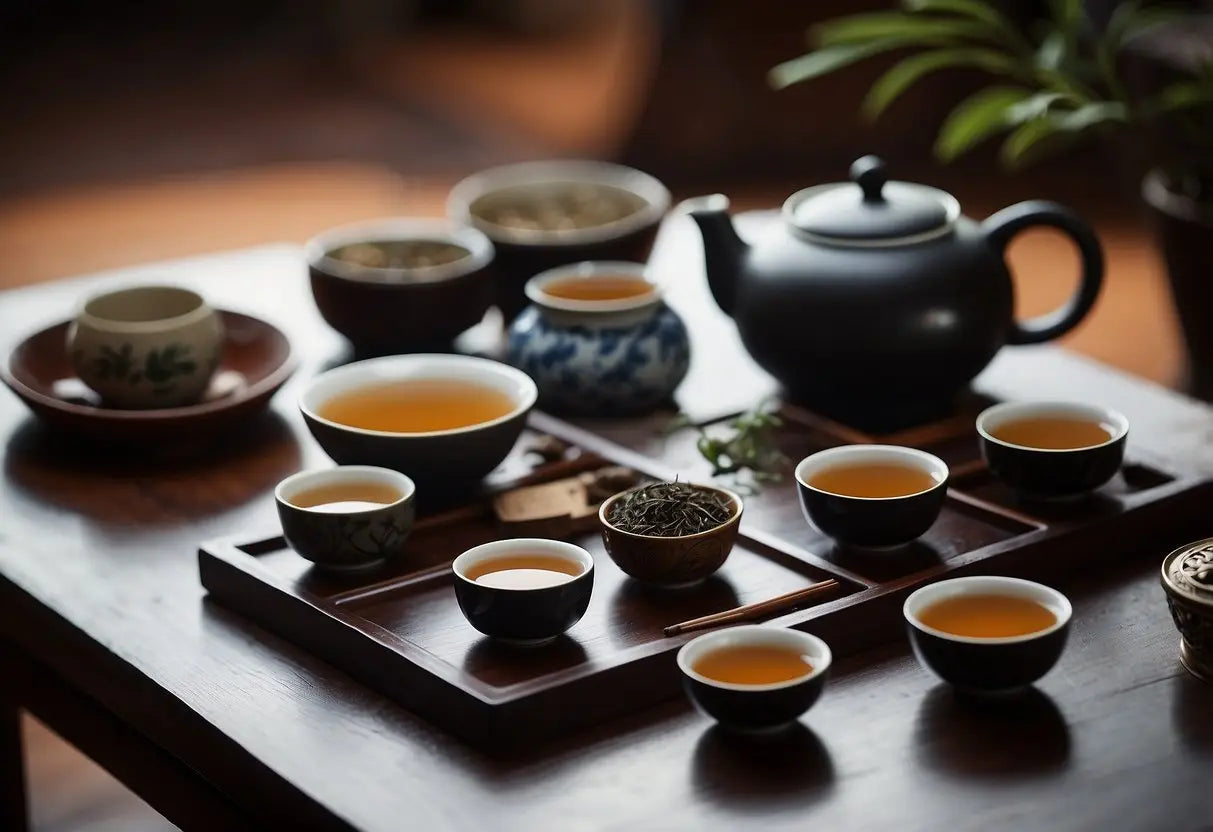
Pu Erh tea comes in two main varieties, each with distinct characteristics and production methods. These types offer unique flavors and health benefits for tea enthusiasts to explore.
Raw (Sheng) Pu Erh
Raw Pu Erh undergoes minimal processing, resulting in a tea that ages naturally over time. You'll find this variety pressed into cakes, bricks, or loose leaf form. When young, it has a bright, crisp flavor with vegetal and floral notes.
As it ages, Raw Pu Erh develops complex flavors, becoming smoother and more mellow. The taste can range from sweet and fruity to earthy and woody. Many connoisseurs prefer aged Raw Pu Erh for its refined character.
Storage conditions greatly influence the aging process. Properly stored Raw Pu Erh can continue to improve for decades, making it highly sought after by collectors.
Ripe (Shou) Pu Erh
Ripe Pu Erh undergoes accelerated fermentation, mimicking the aging process of Raw Pu Erh. This method, developed in the 1970s, creates a smooth, rich tea in a shorter time frame.
You'll notice a deep, dark color in the brewed tea. The flavor profile is often described as earthy, with notes of wood, mushrooms, and damp forest floor. Some varieties may have hints of dark chocolate or dried fruit.
Ripe Pu Erh is generally more affordable than aged Raw Pu Erh. It's an excellent choice for those new to Pu Erh tea, as it offers a mellow taste without the need for extended aging.
Health Benefits and Uses
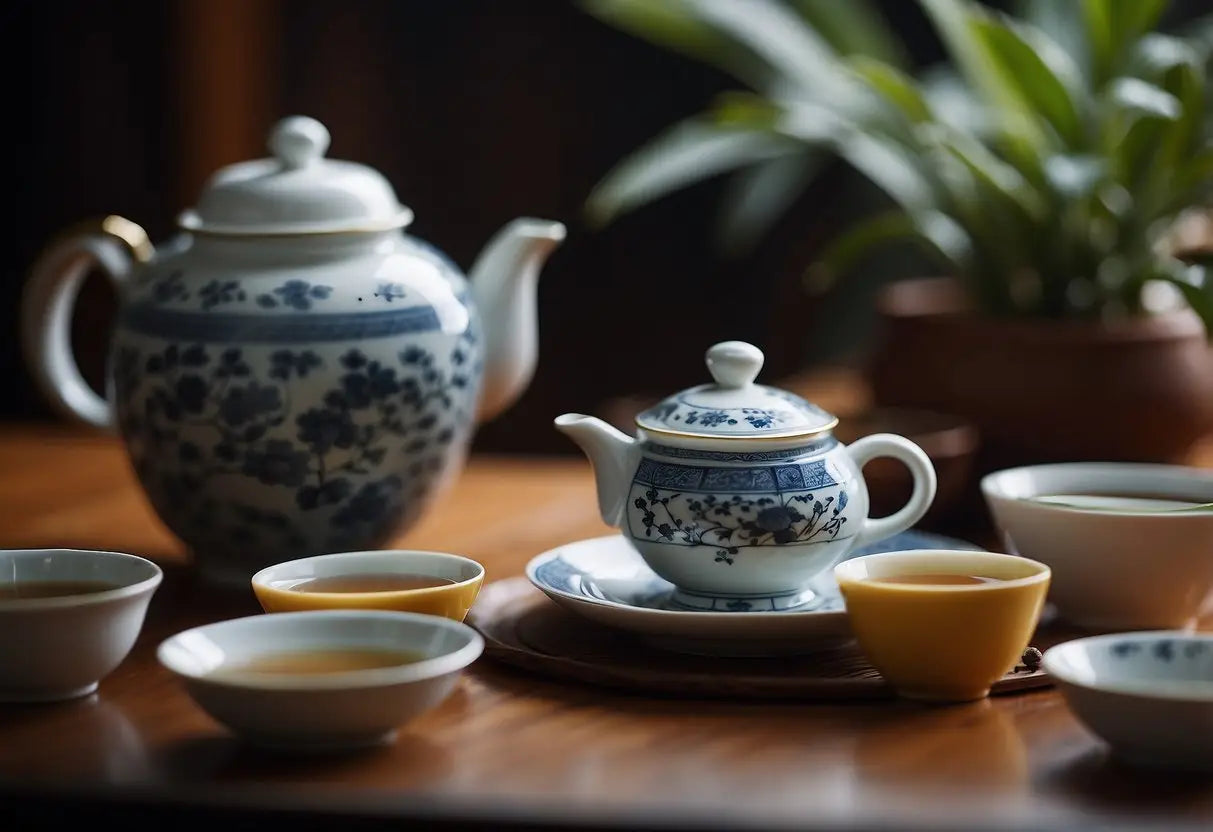
Pu Erh tea offers multiple health advantages and practical applications. Its unique properties can support your wellness in various ways.
Digestive Properties
Pu Erh tea may aid your digestion and promote gut health. It can help stimulate the production of digestive enzymes, potentially easing discomfort after meals. This tea's fermentation process creates probiotics that support beneficial gut bacteria.
You might find Pu Erh helpful for:
- Reducing bloating
- Improving nutrient absorption
- Regulating bowel movements
Some studies suggest it may assist in weight management by enhancing fat metabolism. However, more research is needed to confirm these effects.
Antioxidant Content
Pu Erh tea is rich in antioxidants, which can protect your cells from oxidative stress. These compounds may help reduce inflammation and support your immune system.
Key antioxidants in Pu Erh include:
- Polyphenols
- Catechins
- Theaflavins
Regular consumption might contribute to cardiovascular health by supporting healthy cholesterol levels. Some research indicates potential benefits for liver function and blood sugar regulation.
Pu Erh's antioxidants may also have anti-aging properties, supporting skin health and cognitive function. As with any tea, moderation is key to reaping its potential benefits.
Cultural Practices

Pu Erh tea plays a central role in various cultural practices. These traditions highlight the tea's importance in social interactions and gift-giving customs.
Tea Ceremonies
Pu Erh tea features prominently in traditional Chinese tea ceremonies. You'll find it used in gongfu-style brewing, where small clay teapots and cups are employed. This method emphasizes the tea's aroma and flavor profile.
The ceremony often begins with warming the teaware and rinsing the leaves. You then steep the tea for short periods, typically 10-30 seconds. This process is repeated several times, allowing you to experience how the flavor evolves with each infusion.
During the ceremony, participants focus on the tea's appearance, aroma, and taste. It's common to discuss these qualities, fostering a deeper appreciation for the tea and encouraging mindfulness.
Gift Giving Traditions
Pu Erh tea holds significant value as a gift in Chinese culture. You might present it to show respect, gratitude, or to mark special occasions. The tea's ability to age and improve over time makes it a particularly meaningful present.
When selecting Pu Erh as a gift, consider the recipient's preferences and the occasion. Aged teas are often viewed as more prestigious and may be reserved for important events or esteemed individuals.
Presentation is crucial. You'll find Pu Erh cakes or bricks often wrapped in decorative packaging. Some come in ornate boxes or containers, enhancing their appeal as gifts.
It's customary to offer tea as part of business negotiations or when visiting someone's home. By doing so, you demonstrate thoughtfulness and cultural awareness.
Aesthetic Aspects of Pu Erh
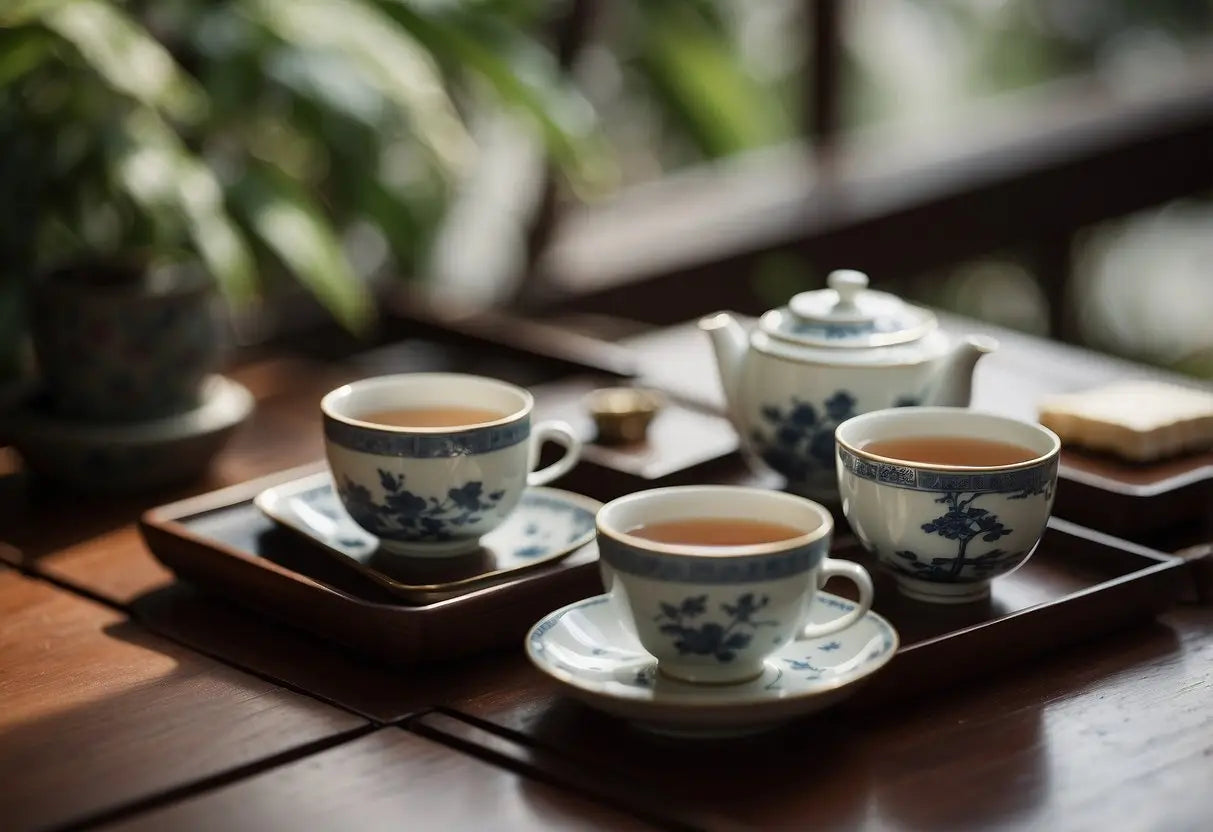
Pu Erh tea offers a multi-sensory experience that engages both your palate and visual senses. Its unique flavors and appearance contribute significantly to its appeal among tea enthusiasts.
Tasting Notes
Pu Erh's flavor profile is rich and complex. You'll notice earthy undertones reminiscent of damp forest floors. Aged varieties often develop a smooth, mellow taste with hints of mushroom or wood.
Young Pu Erh can present a slightly bitter or astringent quality. As it matures, these notes transform into sweeter, more nuanced flavors. Some describe mature Pu Erh as having a pleasant mustiness or leather-like taste.
The tea's mouthfeel is typically full-bodied and smooth. It leaves a lingering aftertaste that tea connoisseurs refer to as "hui gan" - a sweet sensation that emerges after swallowing.
Visual Presentation
Pu Erh's appearance is as distinctive as its taste. The dry leaves range from dark brown to black, often compressed into various shapes.
Common forms include:
- Disc-shaped cakes (Bing Cha)
- Bowl-shaped nests (Tuo Cha)
- Rectangular bricks (Zhuan Cha)
When brewed, Pu Erh produces a deep, reddish-brown liquor. The color darkens with age, becoming nearly black in well-aged varieties.
The leaves unfurl during steeping, revealing their full size and texture. This process, known as "the agony of the leaves," is visually captivating and adds to the overall tea experience.
Global Influence and Trade
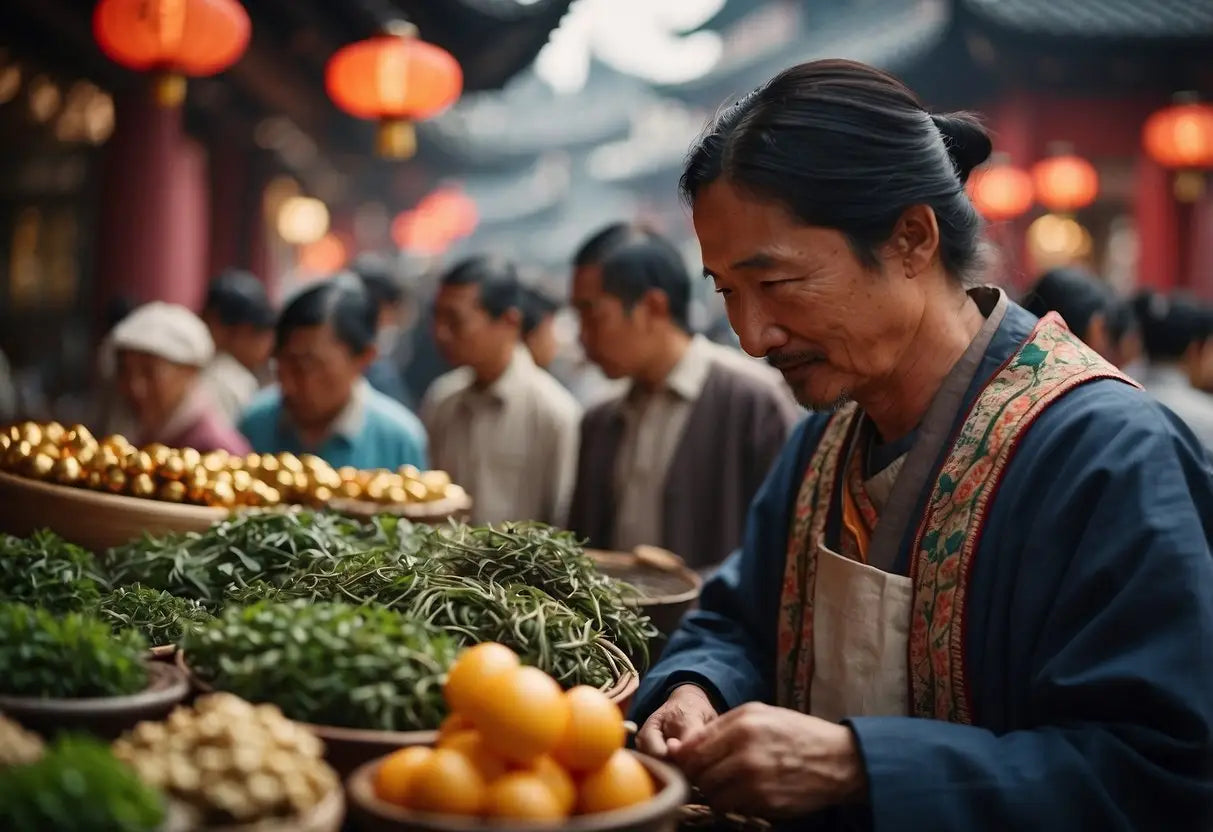
Pu Erh tea has gained international recognition and become a sought-after commodity worldwide. Its unique flavor profile and potential health benefits have attracted tea enthusiasts and collectors across the globe.
Export Markets
China remains the primary producer and exporter of Pu Erh tea. Hong Kong serves as a major hub for distribution to international markets. You'll find Pu Erh tea gaining popularity in countries like Taiwan, Japan, and South Korea.
Western markets, including the United States and Europe, have shown increasing interest in recent years. Specialty tea shops and online retailers have made Pu Erh more accessible to consumers outside of Asia.
Collectibility and Value Trends
Pu Erh tea is often viewed as an investment, similar to fine wines. Aged Pu Erh cakes can appreciate significantly in value over time. Factors influencing collectibility include:
- Age of the tea
- Quality of leaves
- Production region
- Storage conditions
Rare and vintage Pu Erh teas can fetch high prices at auctions. Some collectors focus on specific production years or renowned tea gardens. The market for collectible Pu Erh has seen steady growth, with some cakes selling for thousands of dollars.
Counterfeit Pu Erh teas have become a concern in the collector's market. Experts recommend purchasing from reputable sources and learning to authenticate tea cakes.
Preservation and Storage Techniques
Proper storage is crucial for maintaining the quality and flavor of Pu Erh tea. You'll want to keep your tea in a cool, dry place away from direct sunlight and strong odors.
Avoid storing Pu Erh in the refrigerator, as the humidity can negatively impact its taste and aroma. Instead, opt for a dark cupboard or tea cabinet.
For loose Pu Erh, use an airtight container made of ceramic, glass, or metal. These materials help protect the tea from absorbing unwanted flavors and moisture.
If you have Pu Erh cakes or bricks, wrap them in rice paper and place them in a breathable container. This allows for some air circulation while protecting the tea from dust and debris.
Temperature plays a significant role in Pu Erh storage. Aim to keep your tea between 20-30°C (68-86°F) for optimal preservation.
Humidity control is essential, especially for aged Pu Erh. Maintain a relative humidity of 60-70% to prevent mold growth while allowing the tea to continue its aging process.
Consider using a hygrometer to monitor humidity levels in your storage area. This tool can help you ensure ideal conditions for your Pu Erh collection.
With proper storage techniques, your Pu Erh tea can continue to develop complex flavors and improve with age, enhancing your tea-drinking experience for years to come.
Authenticity and Counterfeiting Concerns

Pu Erh tea's popularity has led to a rise in counterfeit products. You'll find fake Pu Erh teas flooding the market, making it crucial to know how to spot authentic ones.
Reputable sellers are your best bet for genuine Pu Erh. They can provide certificates of authenticity and detailed information about the tea's origin and production.
Look for these signs of authentic Pu Erh:
- Consistent leaf size and color
- Proper packaging with clear labeling
- Distinct aroma and taste
- Appropriate pricing (if it seems too cheap, it might be fake)
Counterfeit Pu Erh often has these red flags:
- Inconsistent leaf appearance
- Vague or missing origin information
- Weak or artificial aroma
- Unusually low price
To protect yourself from fakes, research the tea's origin and producer. Familiarize yourself with reputable Pu Erh brands and their typical characteristics.
Aging is another factor in Pu Erh authenticity. Genuine aged Pu Erh develops complex flavors over time. Counterfeiters may try to mimic this by artificially aging tea or using chemical additives.
By educating yourself and buying from trusted sources, you can enjoy authentic Pu Erh and its rich cultural heritage.
← Older post Newer post →











